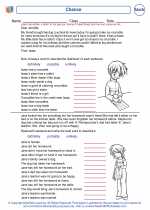Six-Sided Die
A six-sided die, also known as a regular dice, is a small cube with each of its six faces marked with a different number of dots from 1 to 6. It is a common gaming tool used in a wide variety of games, including board games, role-playing games, and gambling activities.
When using a six-sided die, each roll has an equal probability of landing on any of the six numbers. The outcome of a roll is random and independent of previous rolls, making it a fair and unbiased tool for generating random numbers.
In mathematical terms, the probability of rolling any specific number on a six-sided die is 1/6, or approximately 16.67%. This makes it a useful tool for introducing concepts of probability and basic counting principles to students.
Many games and activities incorporate the use of one or more six-sided dice as a key element of chance and uncertainty, adding an exciting and unpredictable element to the gameplay.
Overall, the six-sided die is a simple yet versatile tool that plays a fundamental role in various forms of entertainment and educational activities involving numbers and chance.
[Six-sided Die] Related Worksheets and Study Guides:
.◂Math Worksheets and Study Guides Second Grade. Probability

 Worksheet/Answer key
Worksheet/Answer key
 Worksheet/Answer key
Worksheet/Answer key
 Worksheet/Answer key
Worksheet/Answer key
 Worksheet/Answer key
Worksheet/Answer key
 Worksheet/Answer key
Worksheet/Answer key
 Worksheet/Answer key
Worksheet/Answer key
 Worksheet/Answer key
Worksheet/Answer key
 Worksheet/Answer key
Worksheet/Answer key
